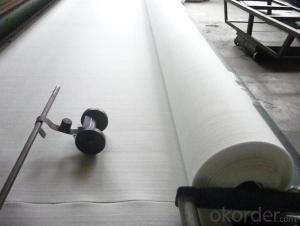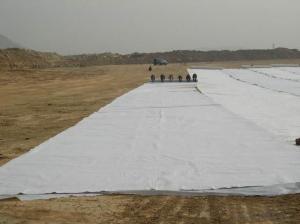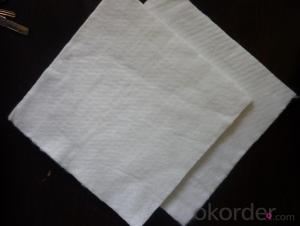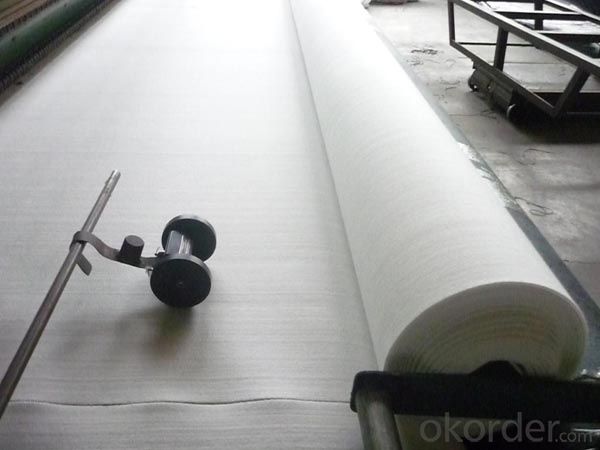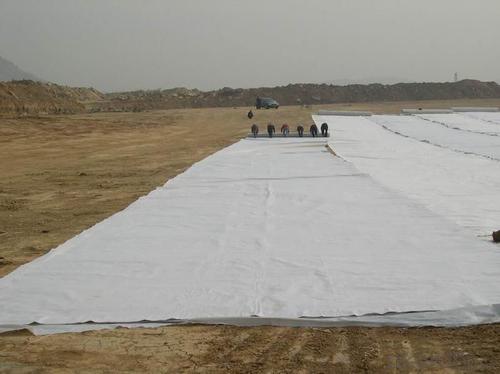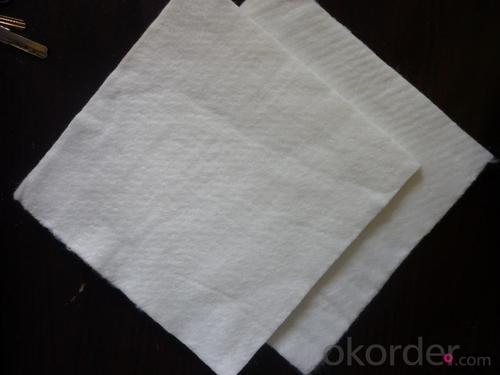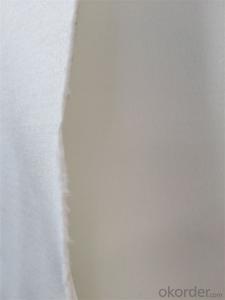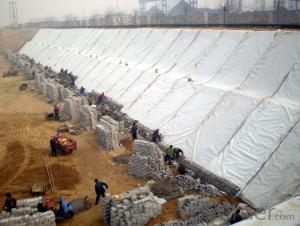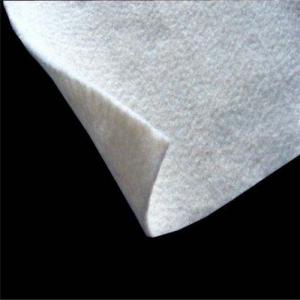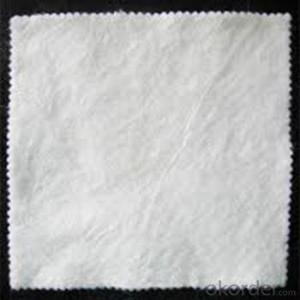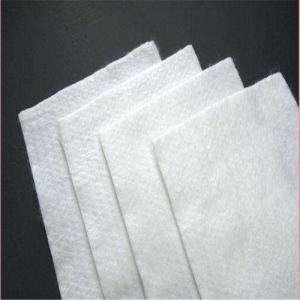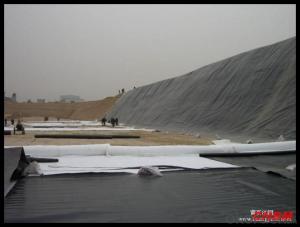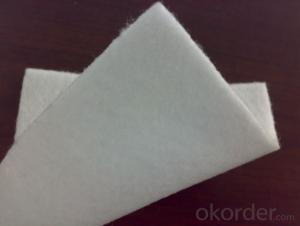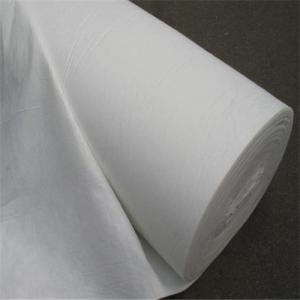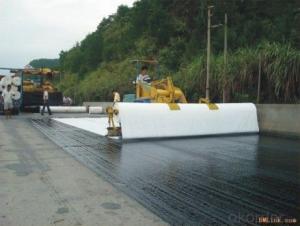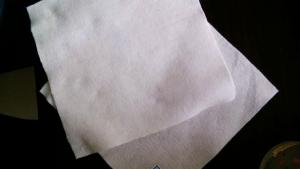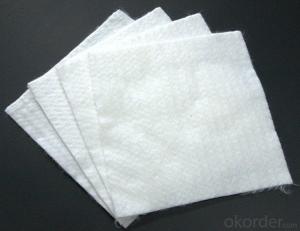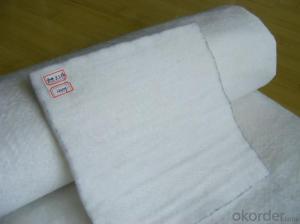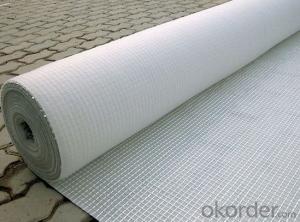PP/PE Nonwoven Geotextile Fabric for Driveway - Best Geotextile Fabric for Construction
- Loading Port:
- Qingdao
- Payment Terms:
- TT OR LC
- Min Order Qty:
- 50000 m²
- Supply Capability:
- 5000000 m²/month
OKorder Service Pledge
OKorder Financial Service
You Might Also Like
Product Description:
1,Specification of PP/PE Nonwoven Geotextile Fabric for Construction
1)Area Weight: 100g/m2-1500g/m2
2) Width: Within 6 m (1m-6m)
3) Length: 50m-100m/roll (as per request)
4) Material: Polypropylene or polyester
2,Specialities of PP/PE Nonwoven Geotextile Fabric for Construction:
1) Staple fibers needle punched nonwoven geotextile
The geotextile is made of polypropylene staple fibers on cross-laying equipment and needle punched equipment. It owns the advantages of acid and alkali resistance, erosion resistance, aging resistance, large strength, stable size, good filtrability etc.
2) Filament nonwoven geotextile
Filament geotextile has features as follows: High strength, good capacity of elongation and high biology tolerance, alkali tolerance, acidity tolerance, weather resistance good filtration and fine drainage capacity etc. Also it is of low cost, easy in construction and use effects.
3,Package of PP/PE Nonwoven Geotextile Fabric for Construction:
Each roll is wrapped with plastic film.
4,Application of PP/PE Nonwoven Geotextile Fabric for Construction:
1) Filtration :
The filtration layer of the dykes, river canal, seacoast, concrete slope, retaining walls. At the same time of preventing the clay granule from passing, it allows the water and the gas pass through freely.
2) Separation :
The isolation of the railway dregs and the roadbed, roadbed and the soft base, surface of the airdrome and parking lot and the groundsill, different dam materials. It isolates the soil and the gravel of two kinds different granule pathway from the groundsill or other buildings.
3) Adding muscle :
The highway, railway, soil-stone dam, breakwater, airport, backfill soil of retaining wall, slope protection, etc in which distributes the earth stress, prevents the side-displacement of the earth body and improves the earth body stability.
4) Protection :
It prevents the bank from being washed out, protects the bank and the bottom, prevents the water and soil from being washed away.
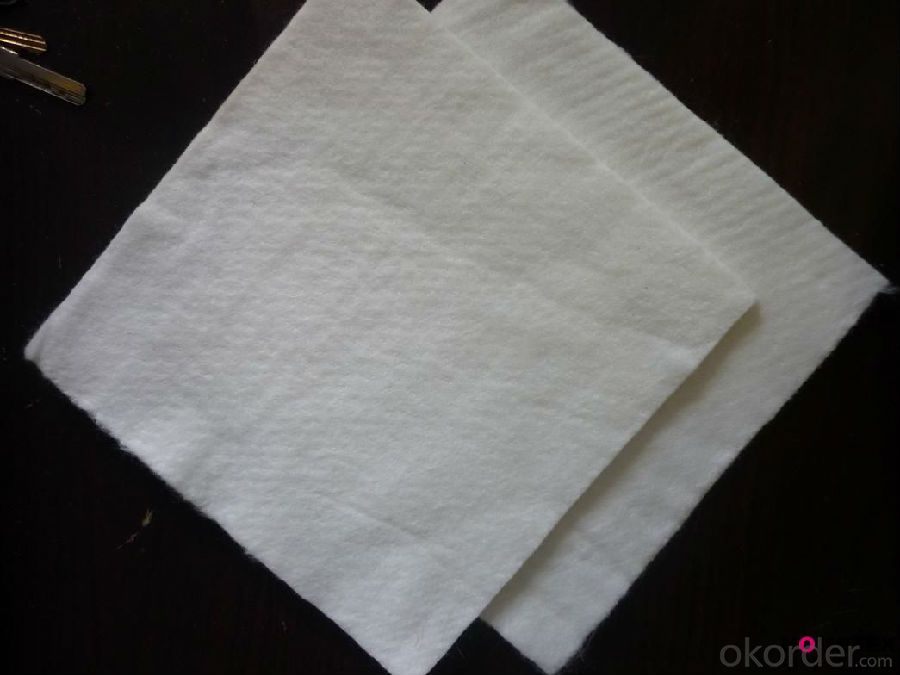
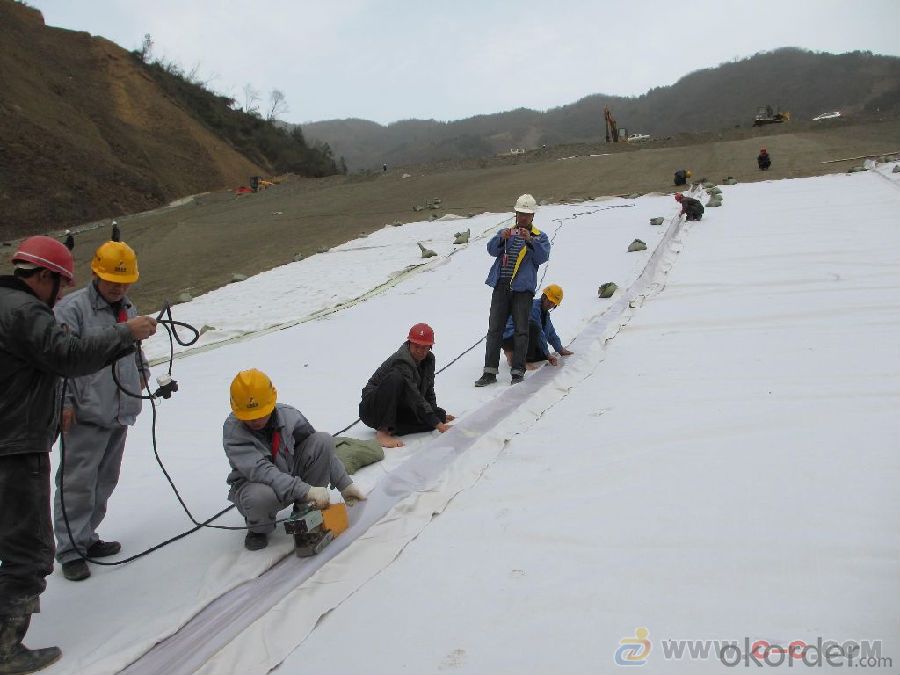
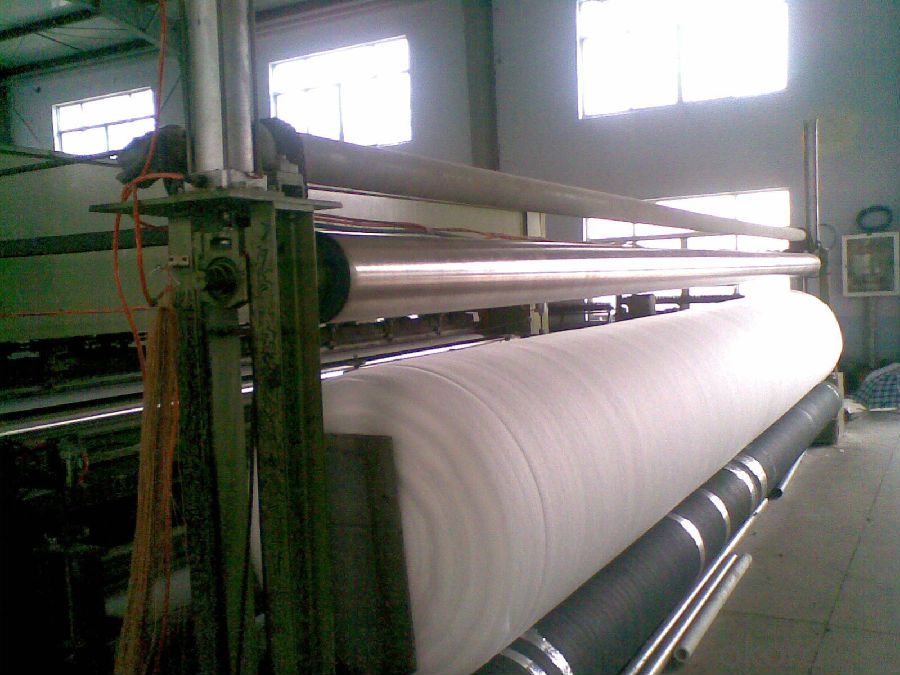
5.FAQ
We have organized several common questions for our clients,may help you sincerely:
1>How about your company?
A manufacturer & supplier focuses on the production of construction materials, including but not limited to PP staple fiber, geotextile geo-grid, geo-bag etc. Customized product is also available based on your detailed requirements.
2>How long can we receive the product after purchase?
It takes about 1 to 4 weeks to finish the production based on the specific production schedual. Then it will depend on the shipping time from loading port to the destination port.
- Q: Can geotextiles be used for slope stabilization?
- Yes, geotextiles can be used for slope stabilization. Geotextiles are commonly used in civil engineering projects to reinforce soil and prevent erosion. By placing geotextiles on slopes, they can provide stability by distributing the forces acting on the slope and improving soil cohesion. Additionally, geotextiles can help with drainage, filtration, and vegetation growth, further enhancing slope stability.
- Q: How do geotextiles help with sediment control in water bodies?
- Geotextiles act as a physical barrier that prevents sediment from entering water bodies. They are designed to filter and separate sediment particles, allowing water to pass through while retaining the sediment. This helps in reducing erosion, improving water quality, and protecting aquatic ecosystems from the harmful effects of sedimentation.
- Q: What are the key considerations for geotextile installation in areas with high seismic activity?
- Some key considerations for geotextile installation in areas with high seismic activity include selecting geotextiles that have high tensile strength and flexibility to withstand ground movement during earthquakes. It is also important to properly anchor the geotextiles to prevent movement or displacement. Additionally, the design and installation of the geotextiles should take into account the potential for liquefaction and soil settlement during seismic events to ensure their effectiveness in stabilizing the ground and preventing erosion. Regular inspections and maintenance should be conducted to identify any damage or displacement caused by seismic activity and address them promptly.
- Q: Geotextile manufacturers are what industry
- Petrochemical! Raw materials are all extracted from the oil out of the glial particles!
- Q: What kind of geotextile is used to repair the road?
- Geotextile in the application of the road: a slope care, specifications in the 250-350g / m2 its role has the following three points: 1. filter when the water from the fine soil into the coarse soil layer, the use of polyester staple fiber Acupuncture geotextile good permeability and water permeability, so that water through, and effectively carrying soil particles, sand, small stone, etc., in order to maintain the stability of soil and water engineering. 2. Drain polyester staple fiber geotextile has a good water conductivity, it can form a drainage channel within the soil, the soil structure of excess liquid and gas efflux. 3. Protection of water flow on the soil erosion, the effective concentration of concentrated diffusion, transmission or decomposition, to prevent the soil by external forces and damage. Second, the foundation treatment, the main role is to strengthen. The use of polyester staple acupuncture geotextile to enhance the soil tensile strength and resistance to deformation, enhance the stability of the building structure to improve soil quality. Specifications not low 400g / m2. The main role is to use the polyester staple fiber geotextile with different physical properties (particle size, distribution, consistency and density, etc.) of the building materials (such as soil and sand, soil and concrete, etc.) ) To isolate. So that two or more materials are not lost, not mixed, to maintain the overall structure and function of the material, so that the building capacity to enhance the capacity. Specifications in the 150-400g / m2
- Q: How do geotextiles improve the performance of foundations?
- Geotextiles improve the performance of foundations by providing separation, filtration, and reinforcement functions. They prevent the mixing of different soil layers, allowing for better load distribution and reducing the risk of settlement. Geotextiles also act as filters, allowing water to pass through while retaining soil particles, which prevents clogging and maintains the stability of the foundation. Additionally, geotextiles reinforce the soil, increasing its strength and enhancing the overall stability and load-bearing capacity of the foundation.
- Q: How do geotextiles contribute to sediment control?
- Geotextiles contribute to sediment control by acting as a barrier that prevents soil erosion and controls sediment movement. They are used in various applications such as erosion control blankets, sediment retention ponds, and silt fences, effectively trapping sediments while allowing water to pass through, reducing the risk of sediment runoff and contamination of water bodies.
- Q: Can geotextiles be used in coastal erosion control structures?
- Yes, geotextiles can be used in coastal erosion control structures. Geotextiles are permeable fabrics that can be placed directly on the soil surface or embedded within it to enhance erosion control. They can help stabilize coastal slopes, prevent soil movement, and provide protection against wave action and erosion.
- Q: GB / T geotextile sampling sampling frequency, 100 volumes equal to the number of square meters?
- Geotextile wide conventional is 6 meters, there are also more narrow and narrow, the length of conventional 50 meters or 100 meters, if the conventional calculation of a roll is 300 square meters or 600 square meters, 100 volumes will be multiplied by 100 on the line The
- Q: How long do geotextiles typically last?
- Geotextiles typically have a lifespan of around 15 to 25 years, although it can vary depending on the specific material used, environmental conditions, and the level of stress they are subjected to.
Send your message to us
PP/PE Nonwoven Geotextile Fabric for Driveway - Best Geotextile Fabric for Construction
- Loading Port:
- Qingdao
- Payment Terms:
- TT OR LC
- Min Order Qty:
- 50000 m²
- Supply Capability:
- 5000000 m²/month
OKorder Service Pledge
OKorder Financial Service
Similar products
Hot products
Hot Searches
Related keywords
